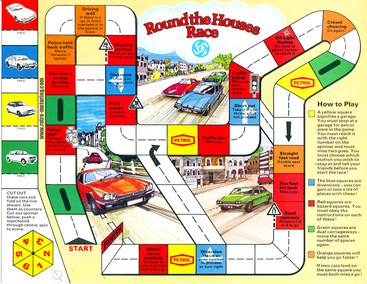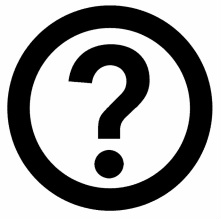 Some of you may have seen the article. When osteopaths manipulate your joints and they go pop or crack, the process has been confirmed. As the joint is pulled apart carbon dioxide dissolved in the synovial fluid aggregates and creates a bubble, the surface tension breaks, the bubble bursts and you hear a pop or click. You'll often hear us say, it can be effective without a click, because we are aiming to override and reset inappropriate muscle tension which is holding the joint in a restricted position, and the small sharp movement when the joint is held in tension can do that, cavitation or not. We can feel whether that has happened and you can usually feel that the joint is easier; however an accompanying crack or pop does seem to often accompany satisfactory results, so perhaps it adds to the process. The MRIs also showed a white flash which (it was reported) may be water being drawn to the joint and thought to be beneficial. My thoughts are that the breaking of the surface tension of a bubble of carbon dioxide is also likely to release heat inside the joint as well as sound, and perhaps this 'deep heat' helps allow the deep intrinsic muscles around the joint to release. Not necessary for a successful manoeuvre, but perhaps a useful 'nice to have' http://www.theguardian.com/science/2015/apr/15/cracked-it-scientists-solve-puzzle-of-why-knuckles-crack-when-pulled http://www.telegraph.co.uk/news/science/science-news/11539913/Why-knuckle-cracking-makes-a-popping-sound-and-why-it-might-be-beneficial.html
0 Comments
 I generally practice osteopathy in what is called a ‘structural’ manner. To cut a very long story short that means that I generally treat joints and muscles using ‘soft tissue’ (massage), ‘articulation’, which is just moving a joint repeatedly through its full range of motion and ‘manipulation’ where a short sharp and tiny movement of a joint is often used to exceed a restriction in the full range of movement (it is more complex than that but maybe that is for another blog entry). These forms of treatment tend to be very effective and all have one thing in common, they are called direct treatments, when you reach a barrier to full movement you confront it head-on trying to push past it one way or another. This tends to work very well for recent injuries and sometimes for chronic injuries too, but there are occasions when those chronic injuries don’t respond, or they do and then they just return to the same pattern, in these instances a different approach is required. With indirect techniques (such as functional technique or balanced ligamentous tension) rather than pushing through the barrier the aim is to move the joint or tissues to a position of ’ease’, ie the position where fewest of the tissues are on tension, I can feel that because it is the point where I can’t reduce the tension by further moving the tissues in any direction. Allowing that place of minimal tension seems to allow the body to start to resolve the dysfunction. Both practitioner and patients can often feel a sort of wiggly, unwinding feeling which ends with the tissues finally releasing. Exactly what that is I don’t know. In my minds eye I see the equivalent of an air mattress being inflated whilst being folded over so that a bit is crumpled underneath and can’t fill with air but if I support it above the ground the crumpled piece will fill bit by bit and will wriggle and straighten out, or sometimes it is more like a ball of string full of slipknots which start to disentangle and separate once there is no tension holding them tight, or even like little hooks that need to gently be released. I’m not saying cells are filling with air or tissues are literally knotted or hooked. The exact mechanisms are unknown but there are theories that opposing muscles which usually pull and release alternately, or are both relaxed, get locked into a tug of war where they pull against each other and that by taking the strain off the stretch receptors (muscle spindles) they can both relax, this fits with the feeling of unhooking, or releasing knots and there is also a theory that there is a circulatory improvement element to the treatment, which fits with the idea of the air mattress. It will be interesting to find out as studies progress, the true nature of the physiological changes but for now I’m just satisfied to know that it can be effective at reducing pain and increasing function.
Current thoughts on physiological mechanisms from Wong, C.K. (2012) Strain counterstrain: Current concepts and clinical evidence. Manual Therapy, 17 (1), pp.2–8.  The official, and I think slightly trite answer, is that we don’t treat conditions we treat patients. One of the tenets of osteopathy is that we regard the body as a whole, aiming to restore overall function, rather than, for example just working on one muscle or joint. That doesn’t help you if you are looking for a therapist for a particular problem. You want to know if that therapist is likely to be able to improve your symptoms, so I’ll try to give some guidance on what I consider to be within the remit of how I practice osteopathy. The first thing to say is that as a structural osteopath I work mainly with muscles and other soft tissues and with joints, so problems affecting muscles and joints directly are usually appropriate for treatment. How much and how quickly they will respond to treatment depends on the nature and severity of the problem, so, for example severe osteoarthritis isn’t going to be reversed but treatment may prevent further deterioration and may decrease pain or increase mobility whereas a more acute problem may be fully resolved in one or two treatments Compression and inflammation caused by dysfunctional joints or muscles may also affect nerves, generating pain or altered sensation, sciatica or certain types of headache are good examples of these. I believe that osteopathy certainly has a role to play in treating these conditions. What is interesting is when you start to think about what other structures inflammation or compression may affect. If you ever injure your ribs or upper back, notice the effect it has on your breathing, if it affects your breathing it affects the oxygenation of your blood, affecting everything from your energy levels to your ability to think. The blood supply, not so much the high pressure arterial supply but venous return and lymphatic drainage, is affected firstly by compressive forces surrounding vessels but also because your body contains a number of pumps which rely on musculoskeletal integrity to maxmimise their potential. A good example of this is the calf pump; when you walk the alternate squeezing and releasing of your calf muscles, coupled with the valves in your veins, helps pump the blood back up to your heart. Any musculoskeletal problem which changes the action of these muscles will reduce the efficiency of that pump. Being able to breathe correctly causes a slight massaging of the abdominal contents, which appears to be beneficial to their health, there’s a paper here http://link.springer.com/article/10.1016/S1091-255X(01)00009-9#page-1 about the benefits of post-operative abdominal massage. Given that posture can affect the space available within the abdomen and it would seem reasonable to suggest that abdominal crowding may lead to discomfort or dysfunction, the opening out of posture may lead to improved function and a reduction of symptoms from abdominal organs. Last but not least, the reduction in pain and increase in mobility has the potential to have an enormous impact on mental health. So, do I claim to be able to treat everything? Not at all! My remit is musculoskeletal complaints and if you have symptoms which I identify as outside my remit I will refer appropriately, but you may find that my treatment of your musculoskeletal symptoms has additional benefits, because, after all I am treating the person not the condition. |
Archives
February 2024
AuthorDamian is the principal osteopath at Vauxhall Village Osteopathy and Oval Osteopathy Categories
All
|



 RSS Feed
RSS Feed


